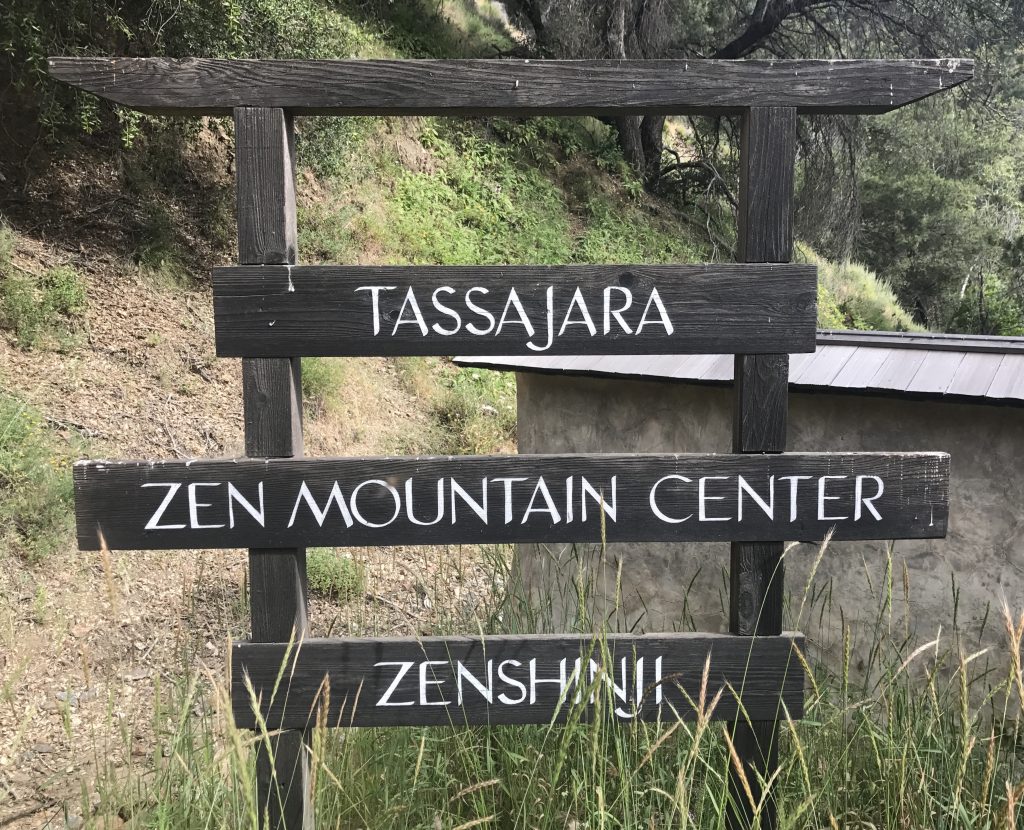
In 1967, Tassajara was established as the location for the first Zen training monastery outside of Japan. It is an iconic destination deep in the rugged mountains east of Big Sur, south of Monterey, California, USA. I will make this an exceptionally long and detailed report with lots of pictures.
Though Judy and I knew about Tassajara, it never seemed practical to go there. In the Day, we had three children to take care of under 10 years old, and not a lot of money. Later, we had worked our way up and had more money, and the children were grown, but foreign countries beckoned. I also was more interested in hot springs and Buddhism than Judy.
It seemed time to finally go visit this place, one of of the few ways to drive into the heart of the rugged mountains in this area, and an ideal base for hiking, hot springing, reading, and getting centered.
Tassajara Hot Springs were known to local Indians hundreds of years ago. News reports I read in the archives there held that Indians had come from as far away as Oregon to partake of the healing waters. I rather doubt these accounts. However, beginning in the 1860s, the springs were known to local pioneers, and soon Tassajara became a resort destination (one rather a challenge to go to, as you had to go by horse-drawn stage and then horseback to get there). The waters were sent for testing, and had 32 mineral elements, the most of any springs in the USA, and the waters were reputed to heal just about any ailment. By 1900, there was a 40 room hotel there, and many cabins. It became a popular resort destination in spite of the difficulty of access. Then, in 1949, a wildfire burned down that hotel, and many of the cabins.
In order to get to Tassajara today, you have to go to the far upper end of the Carmel Valley, south of Monterey, California, and then climb about 3500 feet on 14 mile long rough gravel road to an elevation of over 4800 feet. Then, you drop on an average grade of 14% (very steep) or more down into Tassajara. While 4WDs are recommended, as I am experienced on rough gravel roads, I was able to safely do it in dry weather in a normal sedan. In wet weather, that would have been impossible.
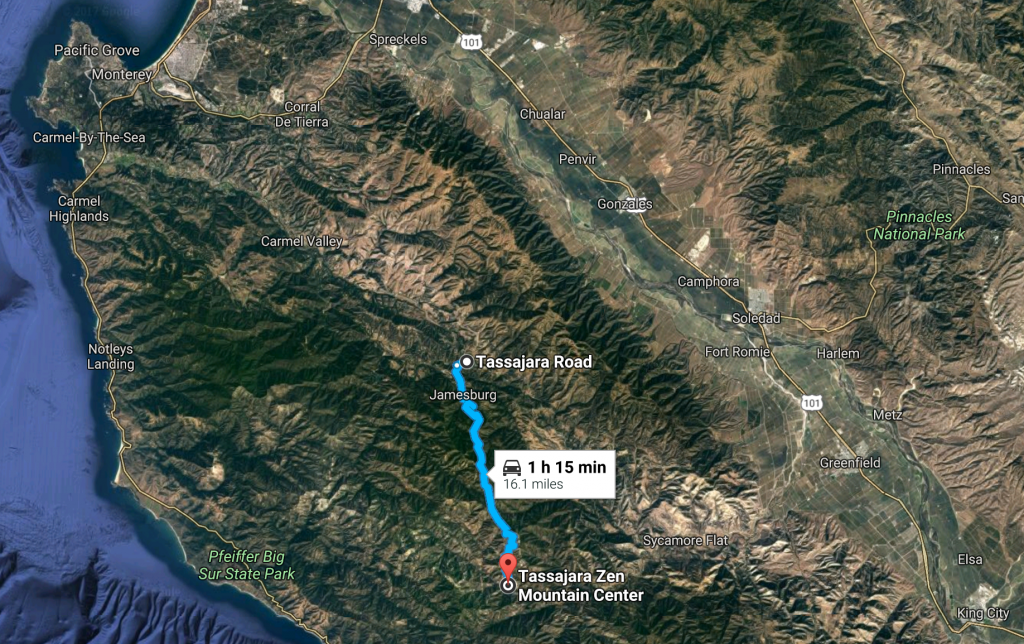


From May till September, the San Francisco Zen Center, which owns and operates Tassajara, opens the grounds to guests as a way to raise funds for the Zen training program the rest of the year.
There are a variety of accomodations available (see link above). I stayed in what are known as the “Pine Cabins”.

My room was simple, with a comfortable bed, a separate bathroom, and an outside deck overlooking Tassajara creek.
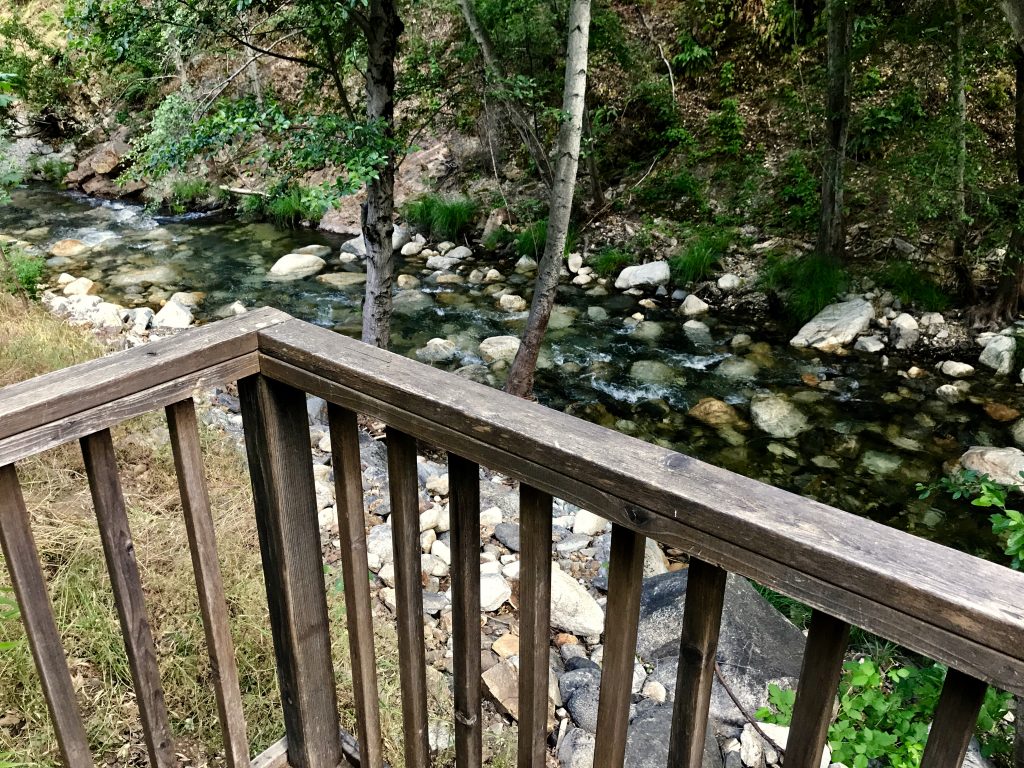
The hot pool area was a short walk up the creek, and had separate men’s and women’s areas. You leave your shoes outside, and are required to shower off with soap before entering the pools to keep the water clean and fresh.

You must shower and wash with soap prior to using the bath, to keep the water clean. Tassajara spring water is 140°F as it comes out of the rocks, so it must be mixed with spring water to achieve about a 106°F temperature.
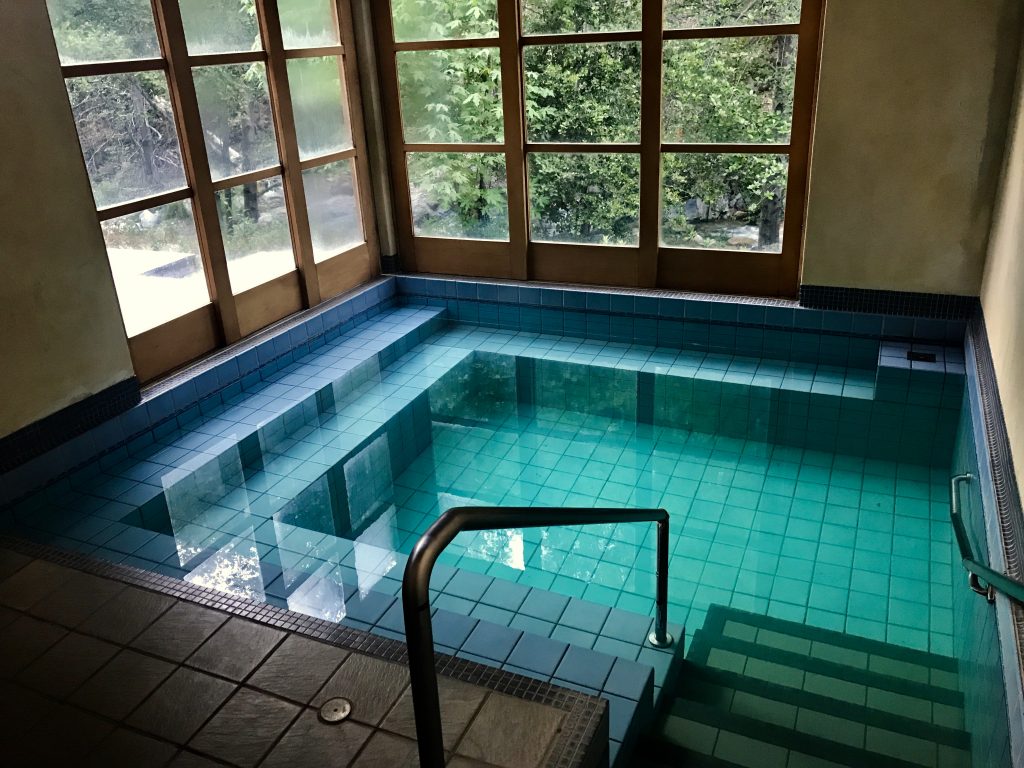
A faint odor of sulphur greets you, so you know this is not just a hot tub. There are also outdoor pools at 101°F
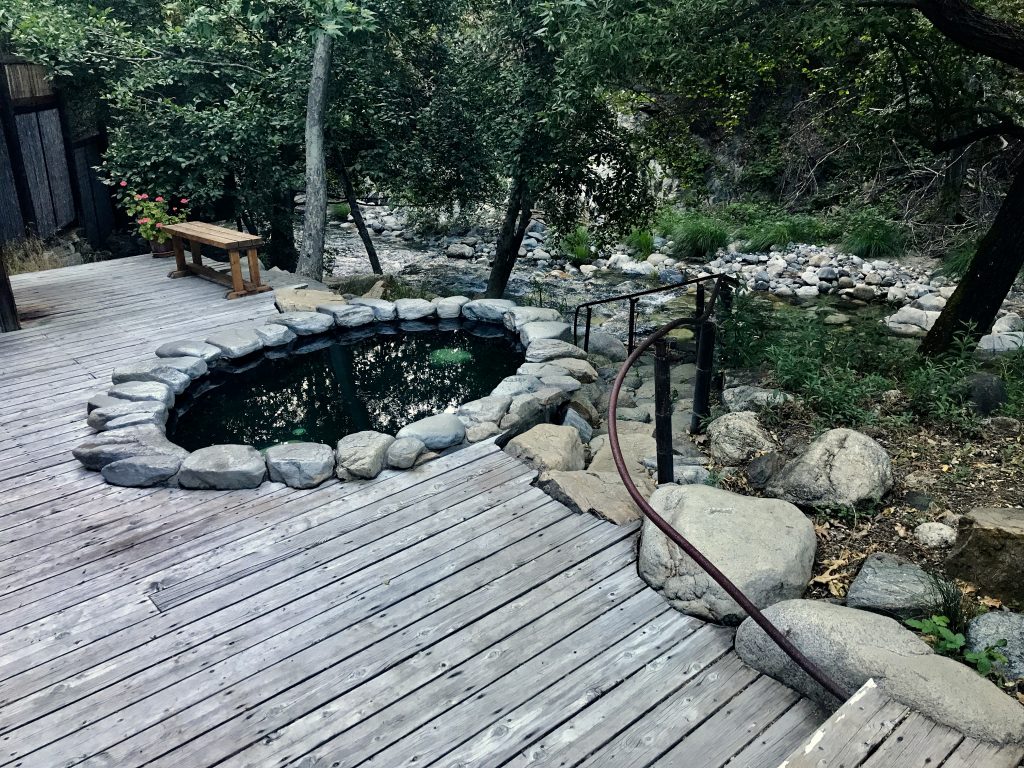
as well as a most unusual steam room. A pool of the 140°F water lies under the redwood decking, and the natural steam rises from it, heating the stone walled room.
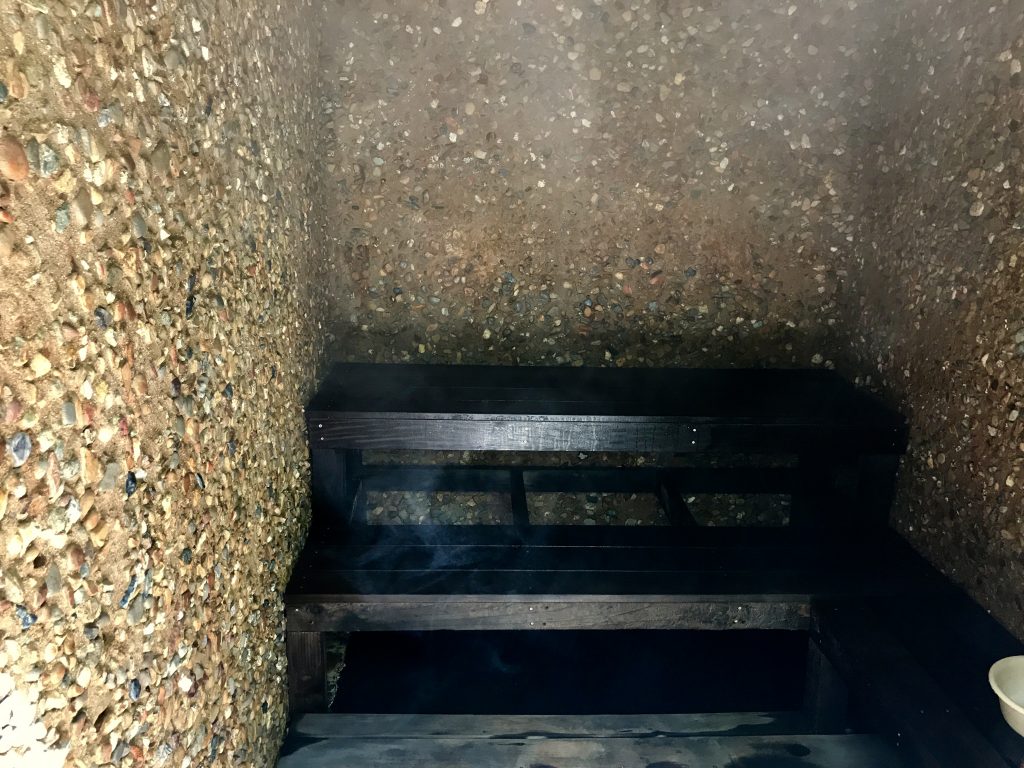
Tassajara provides three ample vegetarian meals a day for guests.
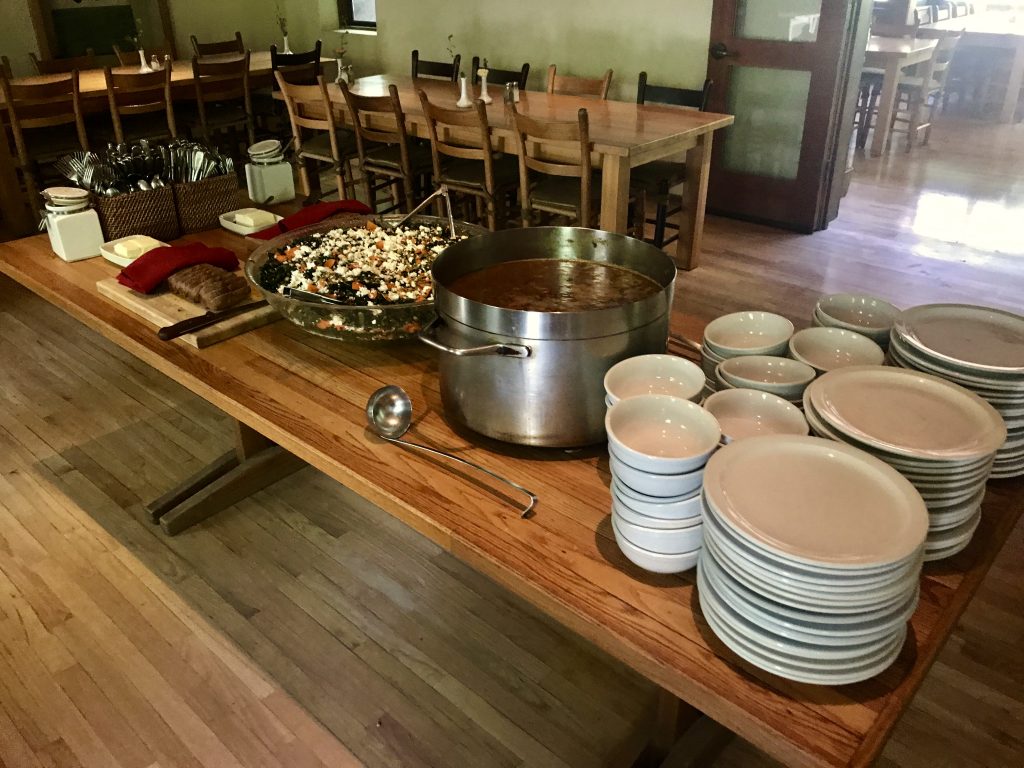
Today’s lunch was lentil soup, fresh baked bread, complex salad, and a cookie. It was good! Breakfasts and lunches were simple, dinners more elaborate. All in all, very good and tasty food.
[vc_row][vc_column][vc_masonry_media_grid grid_id=”vc_gid:1496460157779-b915f4f6-d630-1″ include=”6311,6310,6304,6277,6274,6264,6262,6250,6257,6248,6260,6249,6261,6246,6186,6187,6317″][/vc_column][/vc_row]
The Zendō. (In Zen Buddhism, the zendō is a spiritual dōjō where zazen (sitting meditation) is practiced)

drum from Mel Malinowski on Vimeo.
There are a few local hikes available. My first was to the Wind Caves, about 5 1/2 miles and 1700 feet in elevation climb.
[vc_row][vc_column][vc_masonry_media_grid grid_id=”vc_gid:1496460733681-702b2433-67c1-5″ include=”6205,6204,6207,6206,6213,6210,6228,6227,6223,6224,6222,6221,6216,6242,6243,6240,6241,6232,6230,6234,6237″][/vc_column][/vc_row]
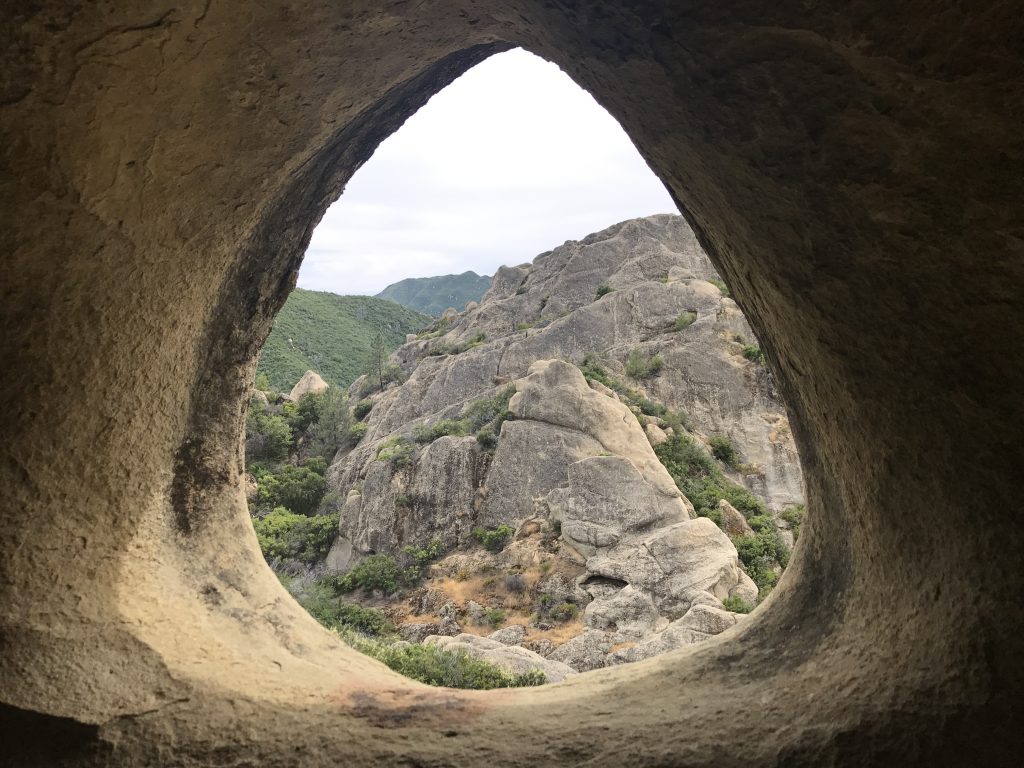
The dramatic view from inside one of the larger Wind Caves in the sandstone cliff.
Another hike of similar length (3-4 hours) is the Horse Pasture trail.
[vc_row][vc_column][vc_masonry_media_grid grid_id=”vc_gid:1496461072224-662882be-9e94-6″ include=”6282,6285,6284,6278,6286,6287,6288,6271,6270,6229,6232,6234,6199,6195,6201,6225,6280,6279,6289,6292,6296,6297,6251,6253,6252,6216,6218″][/vc_column][/vc_row]
Near the end, as you circle back to Tassajara, you need to remove your boots and walk knee deep across the creek four times.
And a last small walk is the ‘memorial trail’
[vc_row][vc_column][vc_masonry_media_grid grid_id=”vc_gid:1496461512315-15720e54-3b96-7″ include=”6265,6272,6273,6264,6263,6262,6269,6259,6212,6270,6318″][/vc_column][/vc_row]
Tassajara waterfall from Mel Malinowski on Vimeo.

The serpent in the garden? A baby. I relocated him off the path out of (our) harm’s way.
If you wish to bath in Tassajara Creek, you can walk 8/10s of a mile downstream, crossing the creek four times, to the ‘Narrows’

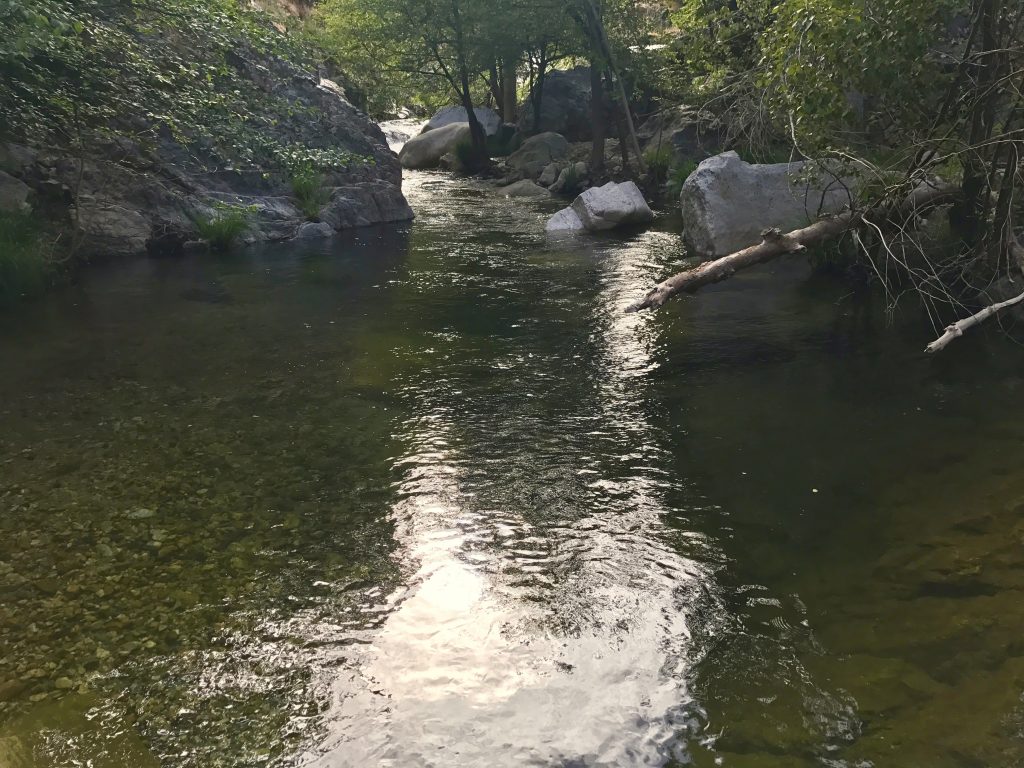

narrows from Mel Malinowski on Vimeo.
The waters of Tassajara Creek are clear, pure and…invigorating. About 50°F invigorating.
In the library near the Zendō, I found several of my favorite books from many years ago by Robert Johnson, a Jungian therapist. Titled “He”, “She”, “We”, “Owning your own Shadow”, and “Transitions”, there is much wisdom therein. I took time to re-read them. Here are a few quotes:
“To transform opposition into paradox is to allow both sides of an issue, both pairs of opposites, to exist in equal dignity and worth.” We need to do this in order to heal our society, so we can see the full truth, not just one side of it.
“The shadow consists of those aspects of your character that belong to you but that have not been given any conscious place in your life…assimilating one’s shadow is the art of catching up on those facets of life that have not been lived out adequately.”
This includes integrating your anima (the feminine part of your personality if you are a man) or your animus (the masculine part of your personality if you are a woman) with your male or female identity. It is essential to being whole and balanced.
“The persona is what we would like to be and how we wish to be seen by the world. It is our psychological clothing”
“The ego is what we are and know about consciously. The shadow is that part of us we fail to see or know.”
The path that I have embarked upon is that of owning my own shadow.

Leave a Reply
You must be logged in to post a comment.